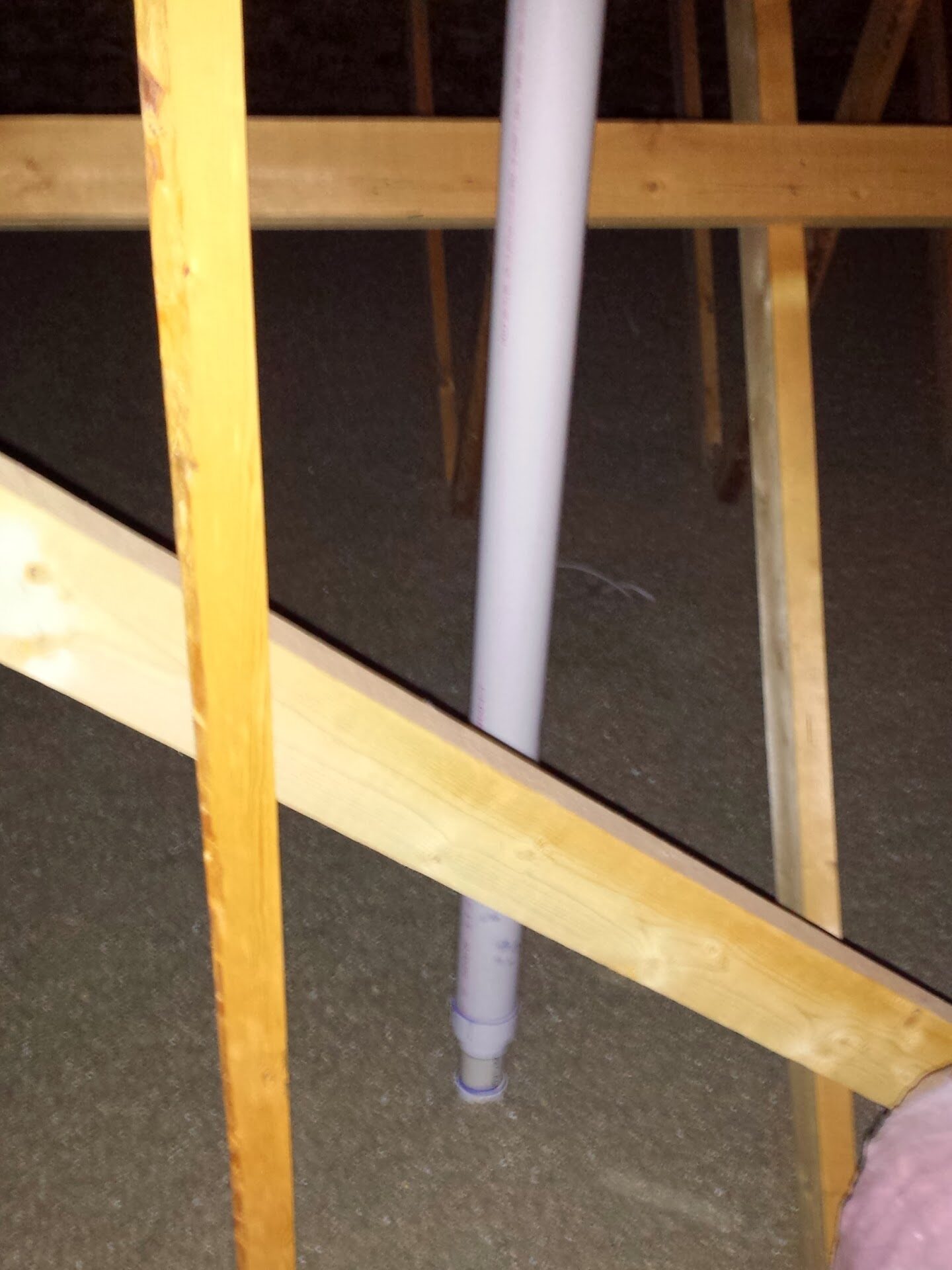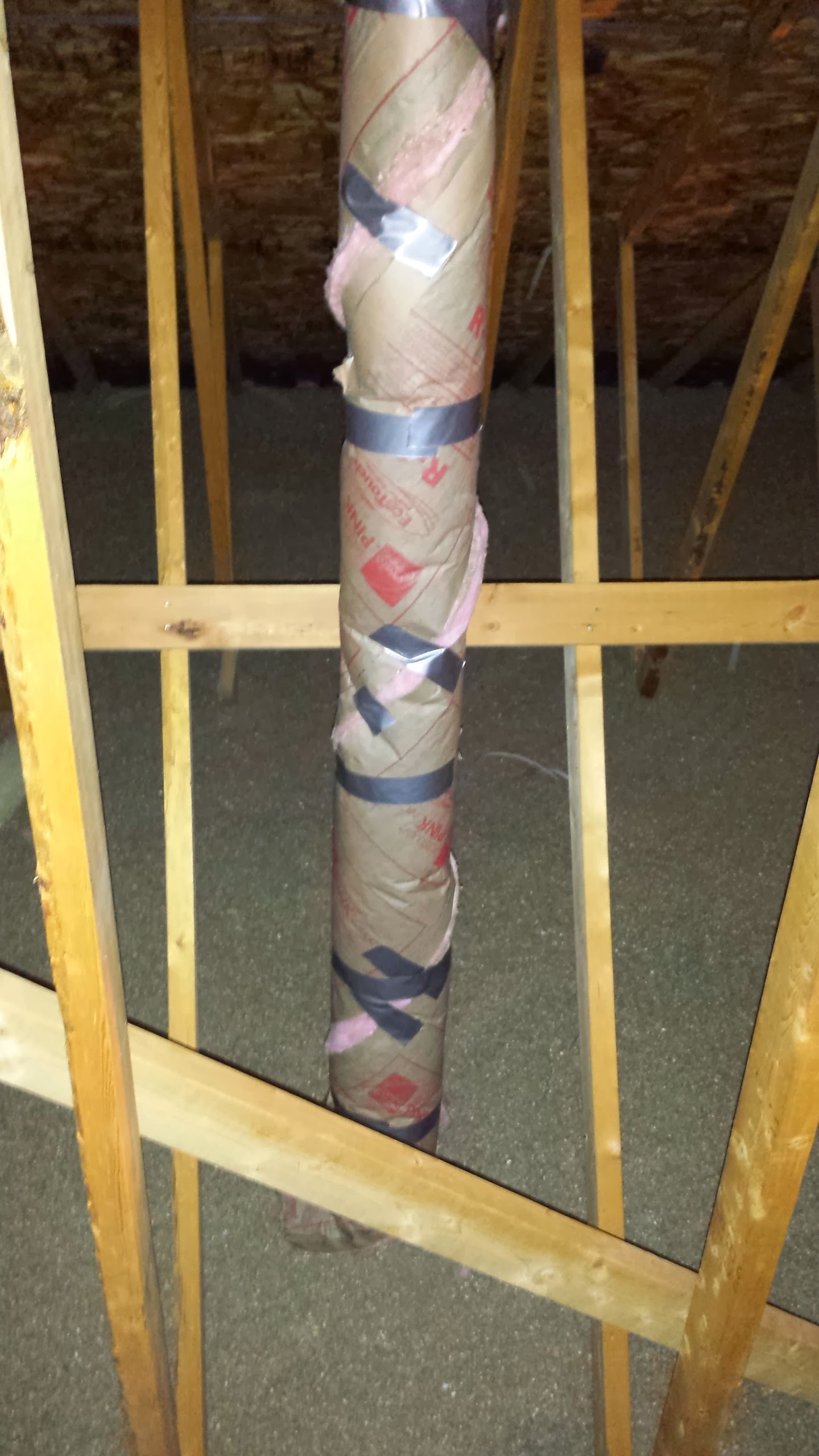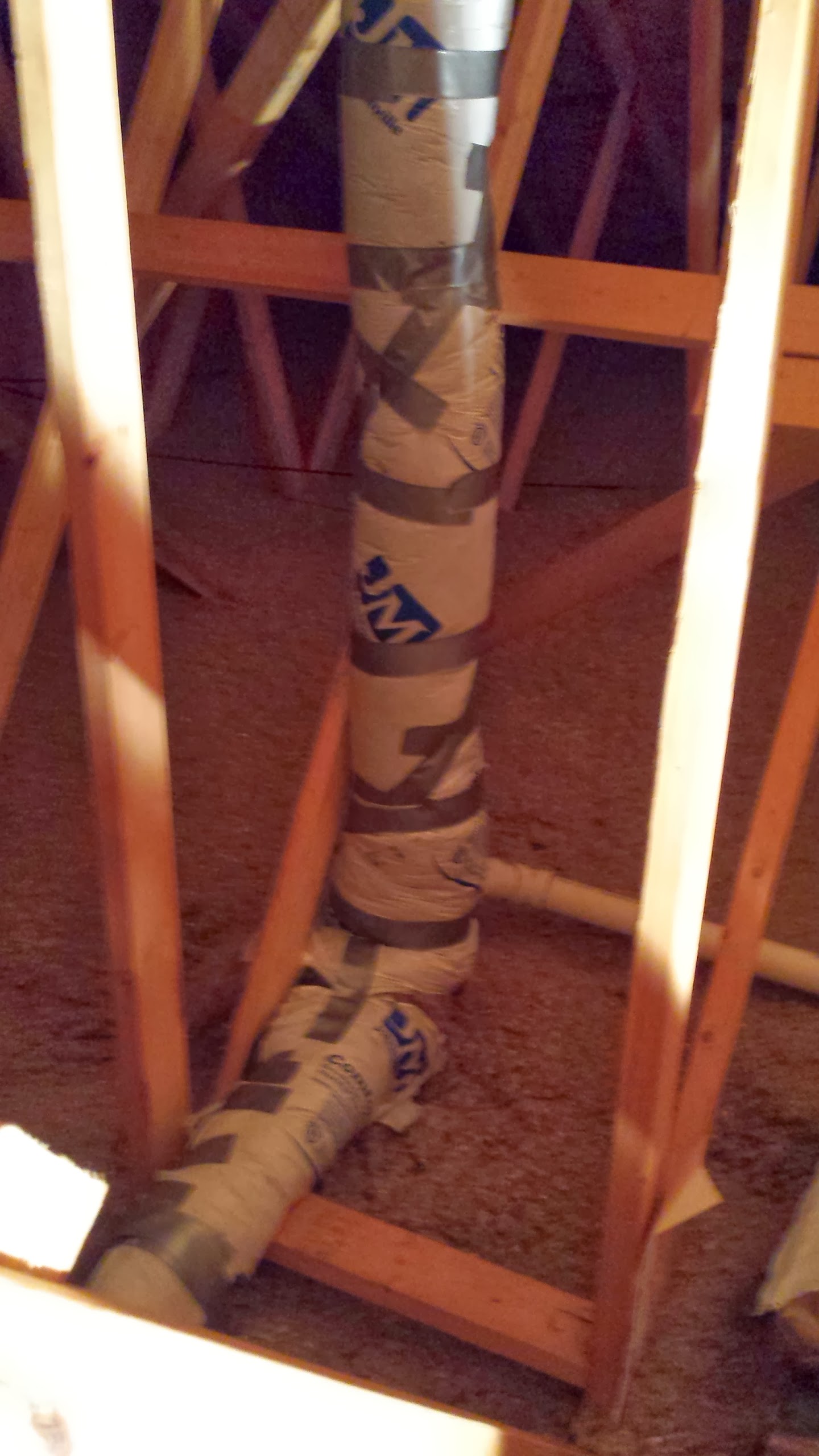For several years, we’ve had an issue where every time the temperature would get down in the single digits (Fahrenheit), our house would take on a rotten egg / sewer smell. The smell didn’t seem to be coming from a specific room or drain — it was everywhere.
We called our builder, his plumber, and even the heating & ventilation contractor, and nobody knew what the problem was.
Looking around online, I suspected that the problem was somehow related to the pipe that vents sewer gas out through the roof. Supposedly, these vents can freeze over in extremely cold winter conditions, causing sewer gas to leak into your house. Some recommendations included visually checking to see if these vents are blocked, but I was never brave enough to climb onto my slippery high-pitched roof to investigate.
This winter has been brutally cold, which motivated me to finally try doing something about my fart-smelling house.
Climbing into my attic, I noted that there was an entire network of exposed sewer ventilation pipe above the blown-in insulation. Since a newer house like mine is generally well-insulated, that meant that all of this pipe was enduring temperatures roughly the same as those outdoors.

This seemed to reinforce my suspicions that condensing sewer vapors were freezing these vents shut.
Some sources I read recommended installing heat tape along or inside these pipes to prevent freezing. Personally, I didn’t want to burn down my house, so I took a simpler route.
I simply bought a roll of wall insulation, wrapped it around the pipe, and duct taped it in place. When wrapping the pipe, I did so at an angle — kind of like a barber pole. That way, by working at the bottom and gently pushing the insulation upwards as I went, I could reach the high parts of the pipe that were out of reach

Since there were vents on each end of the house, I actually ran out of insulation halfway through the job, and had to buy another roll. Having used both paper- and plastic-faced insulation, I found that the version with plastic facing was a lot easier to work with for this task.

The verdict? We’ve had multiple several-day stretches of single-digit temperatures, and the smell hasn’t returned. In previous years, these temperatures would’ve guaranteed a smelly house. So, it appears that it worked!
